Qlik Sense Data Architect Certification Exam v1.0
Question 1
Sales managers need to see an overview of historical performance and highlight the current yearג€™s metrics.
App requirements:
Display the current yearג€™s total sales

✑ Total sales displayed must respond to the userג€™s selections
Which variables should a data architect create to meet these requirements?
A.

B.

C.

D.

Answer : C
Question 2
Refer to the exhibit.
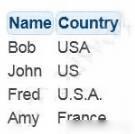
The Country field in a CRM app is a free-form text field. More spelling variations and countries are expected in the future. A data architect must create a field called CountryCode based on the value in the Country field.
Which script should the data architect create to perform this task?
A.

B.
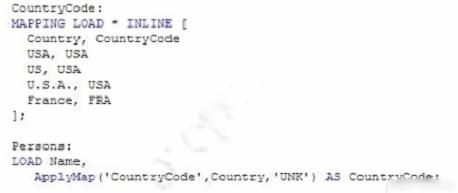
C.

D.
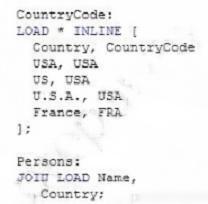
Answer : D
Question 3
A health system needs to analyze patient admission and discharges in a chart with a common date axis that looks like chart below.
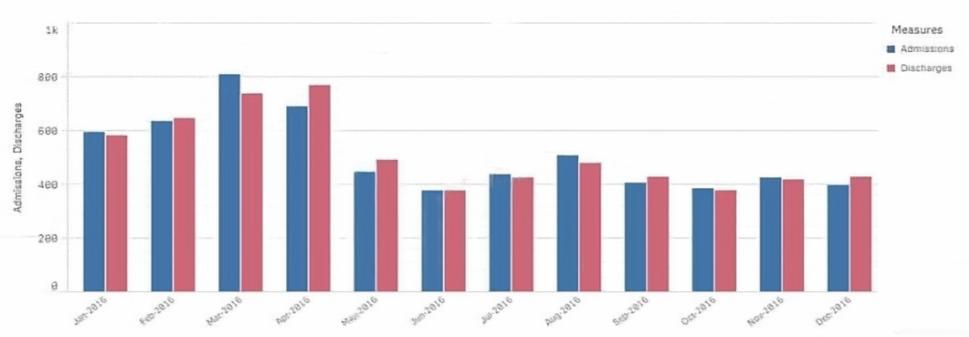
The initial date table (InpatientEncounters) contains a patient admission date and discharge date for each patient encounter. The data architect will use set analysis to calculate the number of admissions and discharges in the chart.
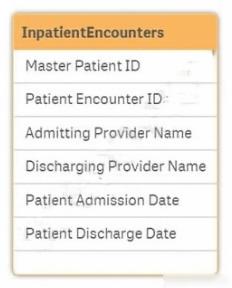
The data architect needs to design a data model with a minimum number of tables.
Which tables should the data architect create to meet these requirements?
- A. AdmissionCalendar, DischargeCalendar, and CommonCalendar
- B. AdmissionCalendar and DischargeCalendar
- C. DateLink, AdmisiionCalendar, and Dischange Calendar
- D. DateLink and CommonCalendar
Answer : D
Question 4
Refer to the exhibit.
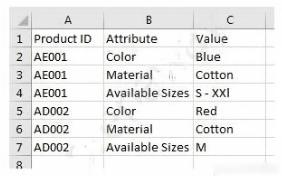
A fashion retail company needs to analyze data product inventory. The company needs to filter by attributes by such as color, material, and size.
Which strategy should a data architect use to meet these requirements?
- A. Turn data rows into fields by using a generic load
- B. Use the hierarchy load statement to expand hierarchy levels
- C. Use crosstable in the load statement to unpivot
- D. Loop through the table to transpose fields
Answer : A
Question 5
A data architect must break down a 13-character ShipmentID code in the following format, # ### ## ## #. Separate fields must be created from the numeric values separated by the hyphen (-). The data architect must extract five sub-fields (ShipmentLoc, Quantity, CategoryID, StoreLoc, and Division) from the 13-character code.
How should the data architect meet this requirement?
- A. In the data manager, use the data profiling card to replace the ג€˜-ג€˜ characters in the ShipmentID
- B. In the data load editor, load the ShipmentID field and apply the PurgeChar9ShipmentID,ג€™-ג€˜) function
- C. In the data manager, use the data profiling card to split the ShipmentID by the ג€˜-ג€˜ character
- D. In the data load editor, load the ShipmentID field and apply the KeepChar() and Trim() functions
Answer : D
Question 6
Refer to the exhibits.
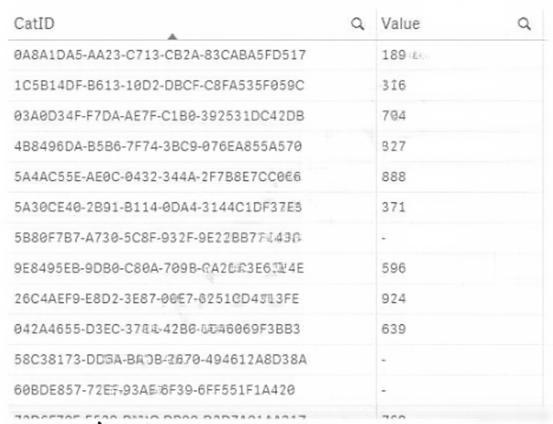
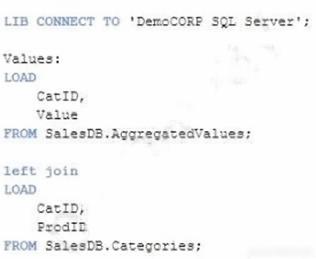
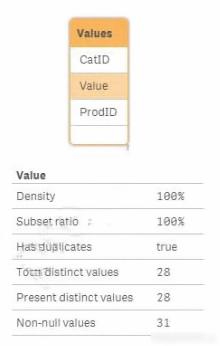
Business analytics report data issues in the Value field of a table since the latest reload of the data.
What causing this issue?
- A. Null values in the source data
- B. Hyphen characters (ג€˜-ג€˜) in the source data
- C. Pre-aggregated data is being used
- D. Some categories do NOT exist in the Category table
Answer : B
Question 7
A customer must create a production app that pulls data from two sources.
Source 1 is large legacy system. It takes more than one hour to read and save the data to QVD. reading from the QVD only takes 20 seconds. The data only needs to be refreshed every month because it does not change very often.
Source 2 is small online data source. reloading this data takes less than one minute. The production app must be refreshed every hour to see the most updated data and needs both data sets to meet te analysis requirements.
How should the data architect set up the data reload?
- A. 1. Create two QVD generation apps 2. Create two scheduled tasks: one runs every month and one runs every hour 3. Load the data in the production app from the QVDs 4. Create a task to run every hour to reload the production app
- B. 1. create a QVD generation app to pull both data sources in different script sections 2. Create two reload schedules from the QVD app based on the script section 3. Build the production app using the QVD files 4. Create a task to run every hour to reload the production app.
- C. 1. Create the production app to connect to both data sources 2. Create a variable and set this to the last reload time using ReloadTime() function 3. Use an IF() statement and only load the legacy data when Today() > 30 days from last reload 4. Create a task to run every hour to reload the production app
- D. 1. Create a QVD generation app for the legacy system only 2. Create a scheduled task to generate the QVD every month 3. Build the production app using the QVD and use ADD LOAD prefix to connect to the online data source 4. Create a task to run every hour to perform a partial reload on the production app
Answer : B
Question 8
Refer to the exhibits.
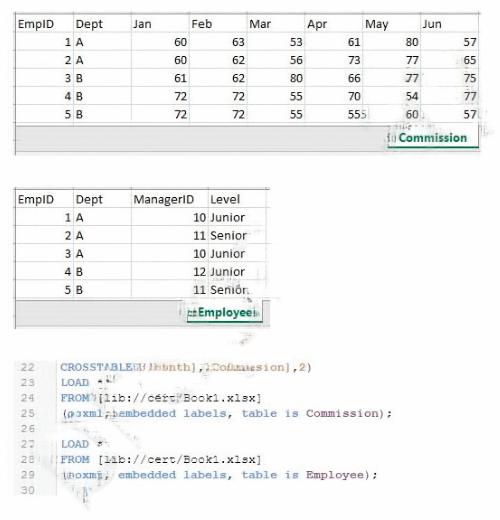
The two tables have been loaded by the script shown. This script creates a synthetic key, which is not desired. The Dept code in the Employee table is incorrect for EmpID=3. The data architect must change line 27 to create a single table in the data model that is accurate.
Which LOAD statement should the data architect use?
- A. JOIN LOAD EmpID, ManagerID, Level
- B. KEEP LOAD EmpID, ManagerID, Level
- C. JOIN LOAD *
- D. CONCATENATE LOAD EmpID, ManagerID, Level
Answer : D
Question 9
Refer to the exhibit.
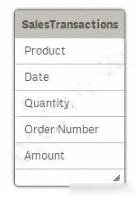
Each order can have multiple products. The data architect needs to make sure the Amount can be analyzed by order Type and product Category.
The Order Number field data always contains the order Type in the first three characters. Product, Product Category, and Sales Channel data are available in an
Excel spreadsheet called ג€Categoriesג€ in the file PaperProducts.xlsx.
Which two ways can the data architect use to make additions to the existing script and meet the requirements? (Choose two.)
A.

B.

C.

D.

Answer : AB
Question 10
Refer to the exhibits.
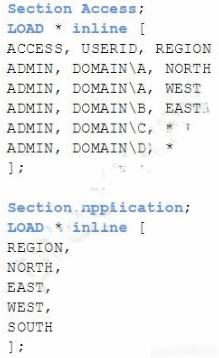
Which values of the REGION field will be visible for User C when the user opens the app?
- A. EAST, WEST, and SOUTH
- B. NORTH, EAST, and WEST
- C. NORTH, EAST, WEST, and SOUTH
- D. EAST and WEST
Answer : A
Question 11
Refer the exhibit.

A new app is being developed. Users need to see:
✑ Total sales for each customer
✑ Total sales for given state
✑ Customers that have not had any sales
✑ Names of salesperson and regional manager
✑ Total number of sales by date
The data architect constructs several data models and tests the validity of each model.
Which two data models meet these requirements? (Choose two.)
A.
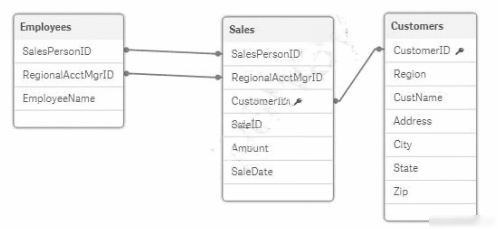
The data architect aliases the MrgID field to RegionalAcctMgrID and the CustID field in the Customers table
B.
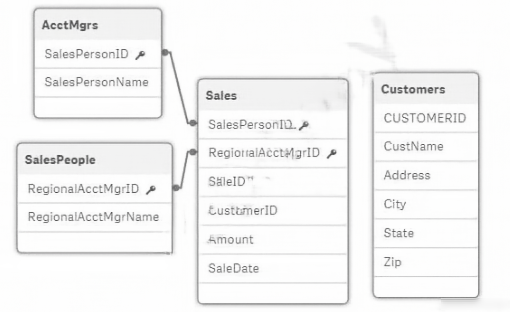
The data architect loads two copies of the Employees table, aliases the appropriate fields, and aliases the CustID field when loading the Customers table.
C.
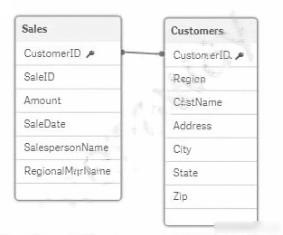
The data architect performs two Left Joins to the Sales table to get the Employee names and loads the Customers table aliasing the CustID field.
D.
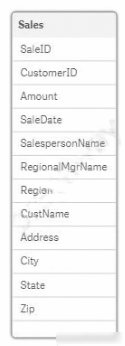
The data architect performs three Left Joins to load the Customer and Employee data fields into the Sales table.
Answer : AC
Question 12
Refer to the exhibit.
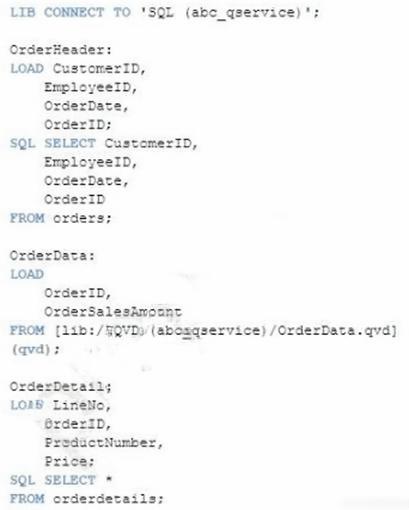
An existing app on Qlik Sense Enterprise is duplicated and transferred to a data architect to add some additional data. When trying to manually reload the original script, the data architect receives an error.
What should be done to make sure the script runs correctly?
- A. Add the line LIB CONNECT TO ג€˜SQL (abc_qservice)ג€™; before the LOAD for the OrderDetail table.
- B. Give the data architect the Read rights on the data connections in the QMC.
- C. Make the data architect the owner of the app in the QMC.
- D. Add the LIB CONNECT TO ג€˜QVD (abc_qservice/OrderData.qvd)ג€™; before the LOAD for the OrderData table.
Answer : B
Question 13
Refer to the exhibits.
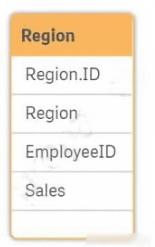
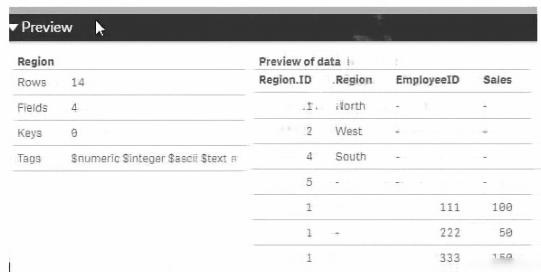


Executives need to see the total sales by region for the current year. The data architect inherits App1 from the former employee who tries to address this requirement. Two Microsoft Excel spreadsheets, Region and Employee, are used as the data source. The data architect creates a table and identifies errors in the amount of sales per region.
Which method should the data architect use to resolve the errors?
- A. In the data manager, split the region table and associate by EmployeeID
- B. In the data manager, concatenate the Region table and associate by Region.ID
- C. In the data load editor, concatenate the region and Employee tables
- D. In the data manager, split the region table and associate by Region.ID
Answer : D
Question 14
Refer to the exhibits.
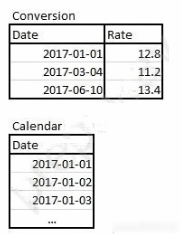
A business analyst must see a currency conversion rate for any given date in a chart. The currency conversion rate data is held in a separate table in the database and only contains a record when the rate changes. An existing master calendar exists in the data model that contains a full set of dates.
Which technique should the data architect use to meet this requirement?
- A. Join the calendar with the currency conversion table Order by date and use the Peek function to fill in the blank values
- B. Use IterNo and autogenerate to create a new calendar max and min dates of the currency conversion table Force concatenate with the master calendar
- C. Use a For loop between the start date and end date of the master calendar Use the Match function to add the currency conversion rates to the master calendar
- D. Use IntervalMatch to load the currency conversion rate between dates the conversion changed Inner Join the resultant table back into the master calendar
Answer : B
Question 15
Refer to the exhibit.
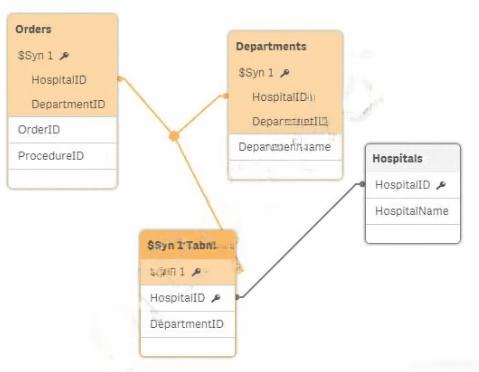
A data architect needs to resolve a synthetic key and make sure that users can see the unique department name and hospital name for each order.
Which action should the data architect take?
- A. Remove DepartmentID from the LOAD statement for the Orders table
- B. Remove HospitalID from the LOAD statement for the Orders table
- C. Remove the Departments table from the LOAD script
- D. Remove the Hospitals table from the LOAD script
Answer : A